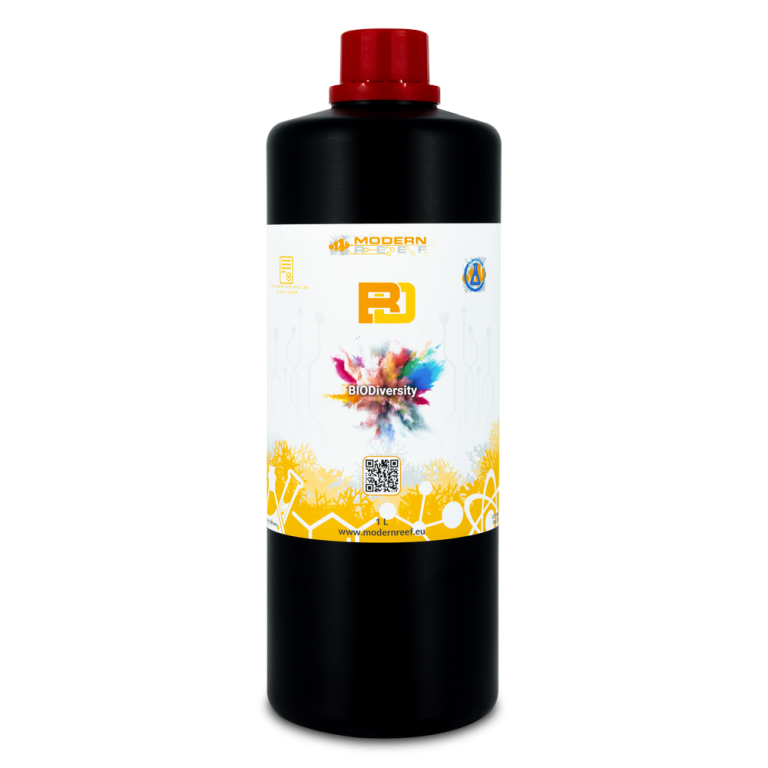Anti-Dinoflagellates and Cyanobacteria Protocol
Introduction:
This protocol is designed to help reef aquarium hobbyists combat dinoflagellates and cyanobacteria using a combination of four Modern Reef products. By following this protocol, you can create a balanced and healthy reef environment that promotes beneficial microorganisms, boosts non-phototrophic microorganisms to outcompete dinoflagellates and cyanobacteria, and reduces the growth of unwanted pests.
Products Used:
- BIOReef-Snow: A unique mixture of flocculent compounds and sponge vitalizers that neutralizes undesirable acids and is a solution against dinoflagellates, slime algae, and cyanobacteria.
- BIOBac: A full-spectrum synthetic bacterial blend that includes probiotic, nitrifying, and purple bacteria—designed to aid in the nitrification process and the breakdown of toxic ammonia and hydrogen sulfide.
- BIODiversity: A lab-bio-engineered solution that diversifies and boosts the microfauna in your reef aquarium, creating a more vital reef immune system.
- BIOActivator: An all-in-one biological stimulant based on enzymes and bacteria food that promotes microbiology in reef aquariums, improves water clarity, and retains excess nutrients and contaminants.
- NITRI-Bac (optional): A specialized nitrifying bacteria blend that enhances the nitrification process and promotes a healthy nitrogen cycle.




Protocol
Step 1: Prepare the Mix
- Collect 250-500ml of aquarium water in a cup or container. Do not use osmosis water.
- Add the following products to the collected salt water in this order, using the recommended dosages:
- BIOReef-Snow: 1ml per 100L
- BIOBac: 1ml per 100L
- BIODiversity: 10ml per 100L
- BIOActivator: 1 measuring spoon (included) per 100L
- NITRIbac (optional): 5ml per 100L
- Mix the liquid using a small cafe mixer or any other tool that helps mix well.
- Allow the mixture to rest for a minimum of 4-5 hours before applying it to the aquarium. You can mix it in between and mix it again before applying it to the aquarium. The mixture can be left to rest for up to 12 hours.
Step 2: Apply the Mix and Initiate Blackout Cycle
- Use a pump to blow off cyanobacteria, dinoflagellates, and any debris from rocks and sand.
- Turn off/stop the skimmer, filter socks, roll filter and UV filter, a for at least 4 hours.
- Apply the mixture to the aquarium when the lights turn off.
- Allow the mixture to mix with the aquarium water for 1 minute, then turn off the circulation pumps on the display tank (not the returning pump) for 15-30 minutes to allow the mixture to precipitate to the sand or aquarium surface.
- After 15-30 minutes, turn the circulation pumps back on to restore normal water flow.
- Program the lights to stay off for the next day to initiate the blackout cycle.
- Wrap the tank with a dark material to ensure the aquarium is completely dark during the blackout period.
Note: To ensure the most accurate results, we strongly recommend turning off your roll filters for 6-12 hours. Some roll filters can be overly aggressive in their cleaning processes, which may inadvertently affect the outcome. By disabling them temporarily, you can prevent any potential interference with the ingredients and guarantee more reliable results. While this precaution may not be necessary for all roll filters, it’s always better to err on the side of caution to ensure the best possible outcome.
Step 3: After Dosing
- Turn on/connect the skimmer, filter socks, roll filter and UV filter in the morning of the next day or after 4 hours of dosing the mix. Use a good UV filter that is rated for a larger tank size than your aquarium.
- On the morning of day 2, turn the lights back on (after +/- 36 hours).
- Repeat the protocol weekly for 4 weeks, even if the aquarium appears clean.
Important Notes
- Maintain good and strong water circulation to prevent stagnation and promote healthy water flow.
- Improve pH fluctuations by improving gas exchange to reduce CO2 levels.
- Keep NO3 and PO4 levels detectable to acceptable high to promote a balanced nutrient environment.
- Always follow the instructions and guidelines provided with each product, and be patient and observant of your aquarium’s response.
By following this protocol, you can create a healthy and balanced reef environment that promotes beneficial microorganisms, boosts non-phototrophic microorganisms to outcompete dinoflagellates and cyanobacteria, and reduces the growth of unwanted pests. Remember to always follow the instructions and guidelines provided with each product, and be patient and observant of your aquarium’s response.





